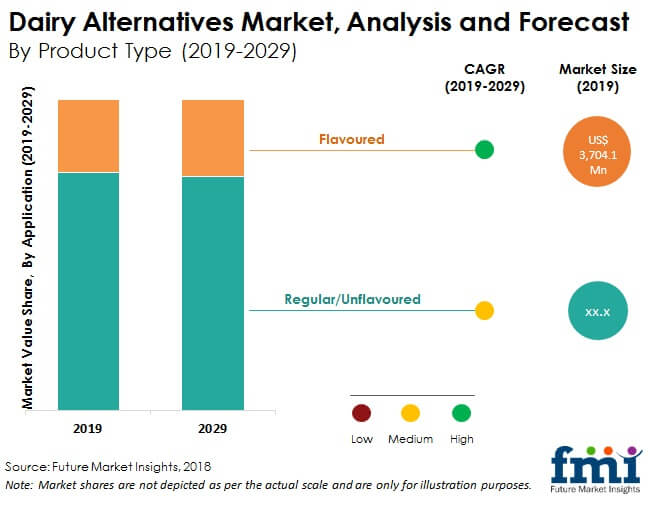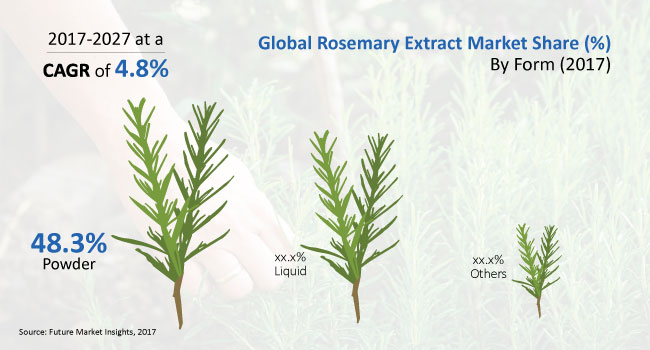Consumers have become increasingly conscious about the environmental damages, which is attributable for the trend of shifting to a vegan protein diet which is more sustainable. Future Market Insights (FMI) in a new study sees this as one of the key factors enabling growth in the hydrolysed vegetable protein market, which is expected to surpass US$ 1.17 Bn by 2021. Hydrolysed vegetable protein has various health benefits which include improving digestion, lowering the rate of heart disease and enhancing the immune system. Such properties of hydrolysed vegetable protein products have been helping them gain traction among consumers who are willing to spend more products such as hydrolysed pea protein foods.
Request a report sample to gain comprehensive market insights @
https://www.futuremarketinsights.com/reports/sample/rep-gb-4949
In the last five years, consumers’ preferences have been shifting towards vegetable protein. This also is considered an outcome of them becoming more conscious about their health which has led to rise in the demand for nutritional food products. Coupled with rising health awareness, some of the leading companies have been promoting hydrolysed vegetable protein products’ benefits towards controlling and preventing diseases commonly associated with obesity and cholesterol. Consequently, hydrolysed protein derived from soy, wheat, pea, rice, flax, and other vegetarian sources have been registering sales uptick. Of these, the demand for soy protein is significantly high. FMI has forecast it to account for over 39% of the total market in 2021.
Key Takeaways from the hydrolysed vegetable protein Market Study
- Hydrolysed vegetable protein market will showcase growth at a positive pace through 2031. It has been forecast to exhibit 5.3% Y-o-Y growth in 2021
- In North America, the U.S. has emerged dominant, accounting for 80.8% share in 2021
- UK will remain a key market, exhibiting 4.1% Y-o-Y growth in 2021
- Germany and France to remain lucrative markets for hydrolysed vegetable protein in Europe
- Healthy growth expected in Japan and South Korea, while dominance in East Asia is likely to remain with China
“Companies operating in the hydrolysed vegetable protein market has been keenly focusing on product development and differentiation to carve a niche amid their respective competitive industries and this will favor overall expansion of the market in the coming years,” said a lead analyst at FMI.
Product Development by Market Players to Spur Growth Opportunities
An increasing number of consumers across the world have been showing inclination towards vegan protein. This has been encouraging companies to invest in new product development based on hydrolysed vegetable protein. The rising demand for sustainable solutions has been paving way for innovation. Besides this, preference towards products with higher shelf-life has emerged as chief driver of innovations within the market. Resultantly, a slew of product launches has been recorded in the last few years, which are expected to aid the overall expansion.
To Get This Report at an Attractive Cost, Click Here @ https://www.futuremarketinsights.com/request-discount/rep-gb-4949
For instance, in 2019, DuPont launched six new hydrolysed vegetable protein nuggets from its SUPRO and TRUPRO product range. These new products offer more protein and less sodium and are is suitable for the manufacturers of snacks, serials, nutrition bar and others. These hydrolysed vegetable protein products include SUPRO soy protein nuggets with cocoa range and TUPRO pea protein nuggets.
Who is winning?
A few of the leading players operating in the Hydrolysed vegetable protein market are Glanbia Plc., Cargill Inc., Kerry Group PLC, DuPont de Nemours, Inc., Tate & Lyle Plc., Fuji Oil Holdings, Inc., The Scoular Company, Wilmar International Limited, AMCO Proteins, Roquette Frères, Puris Proteins LLC, Burcon NutraScience Corporation, Axiom Foods, Inc., Ajinomoto Co., Inc., and others.
The hydrolysed vegetable protein based products market has witnessed rapid growth in the past few years. Surge in the demand for plant-based products has resulted in fierce competition among manufacturers, suppliers, retailers, and food brands. Due to increasing competition, players in the hydrolysed vegetable protein market are compelled to invest, innovate, and introduce new products.
This has resulted in the expansion of hydrolysed vegetable protein portfolio by some of the renowned market players. For instance, Kerry Company’s strategy is to target regions such as Asia, EMEA, and Latin America, for growth via expanding its production footprint and business development with key regional and local players.
Get Valuable Insights into hydrolysed vegetable protein market
Future Market Insights, in its new offering, provides an unbiased analysis of the hydrolysed vegetable protein Market, presenting historical demand data (2015-2019) and forecast statistics for the period from 2020-2030. The study divulges compelling insights on the hydrolysed vegetable protein market based on Product Type (Soy Protein, Wheat Protein, Pea Protein, Rice Protein, Chia Protein, Flax Protein, and Corn Protein), By Form (Chunks, Slices, Flakes, and Granules), By End Users (Household, Commercial, and Industrial) and By Distribution Channel (Direct, Hypermarket/ Supermarket, Convenience Store, Traditional Grocery Retail, Online Retail.) across seven major regions.

